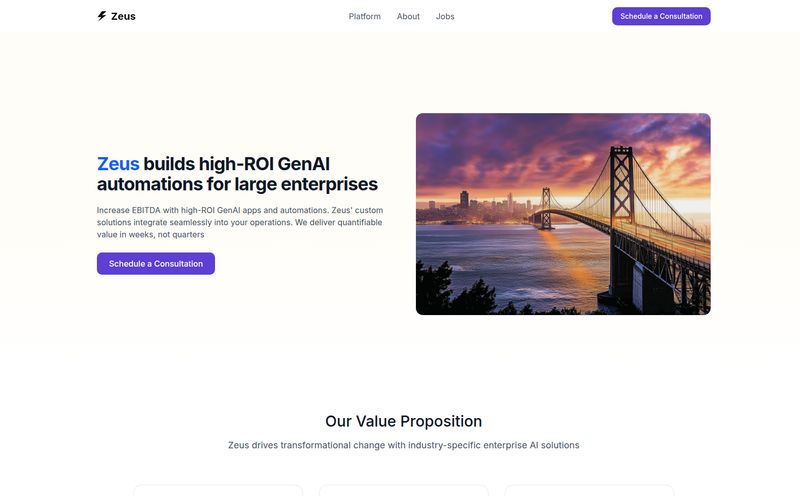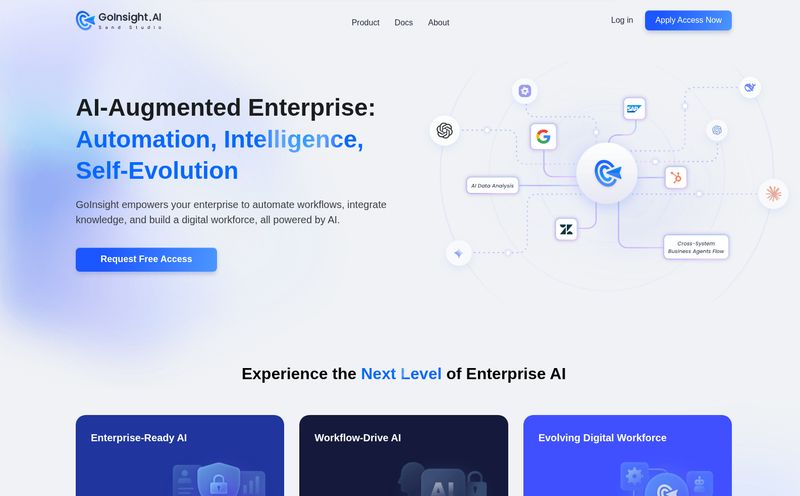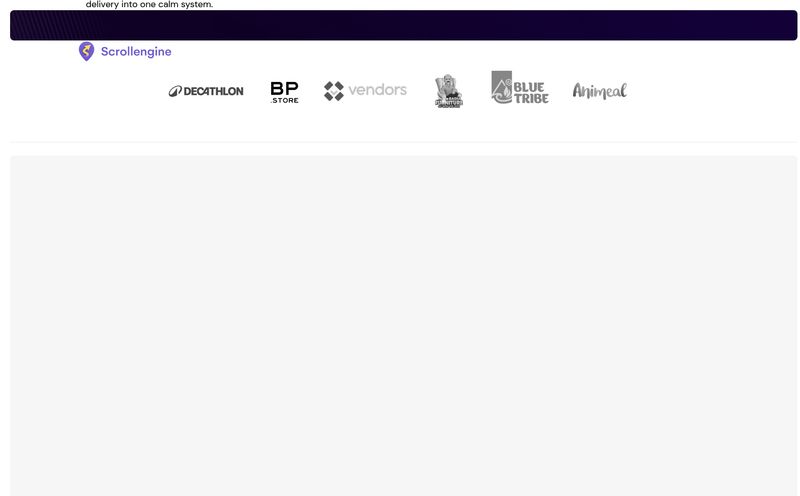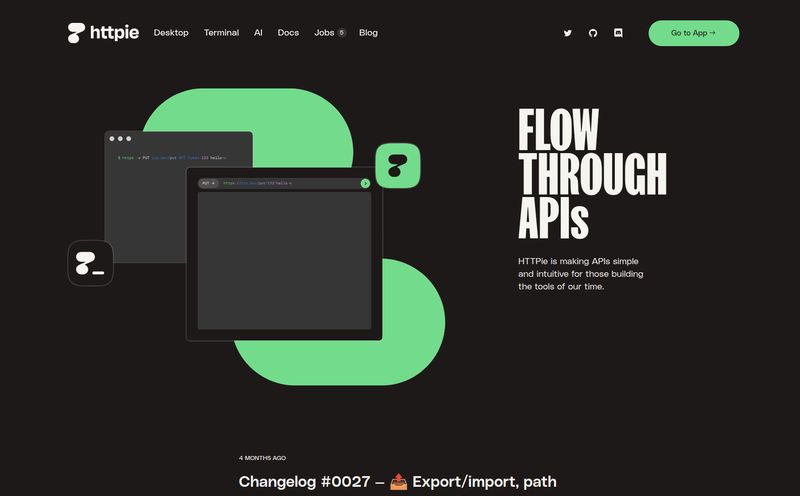If you're in the recruitment game, you know the grind. It's a constant juggle of sourcing candidates, nurturing client relationships, and trying to keep your head above a sea of spreadsheets and disconnected apps. I've been there. For years, the holy grail has been a single platform that does it all without being a clunky, overpriced mess. It’s the unicorn of our industry.
So, when I started hearing the buzz about Recruit CRM, my curiosity was piqued. Another platform promising to be the “all-in-one” solution? Sure. But this one kept mentioning AI, a sleek interface, and a focus specifically on recruitment agencies. That got my attention. I decided to take a proper look, peel back the marketing layers, and see if it actually holds up. Is this the tool that finally gets it right?
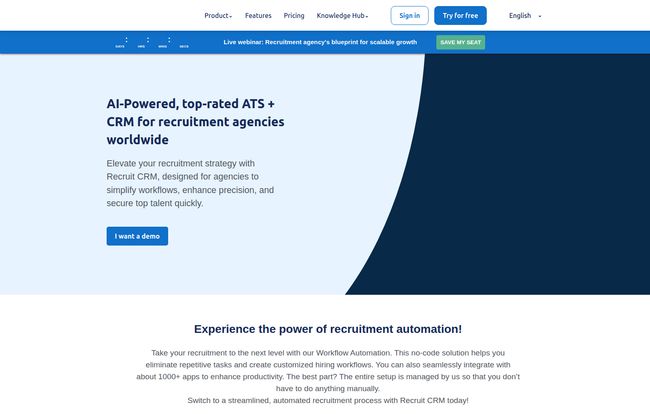
Visit Recruit CRM
So, What Exactly is Recruit CRM?
At its core, Recruit CRM is an AI-powered software that combines an Applicant Tracking System (ATS) with a Client Relationship Management (CRM) tool. Now, that's not a brand new concept, but the way they package it is what’s interesting. It's built from the ground up for recruitment and staffing agencies. Not for in-house HR teams, not for general sales, but for us.
Think of it as the central nervous system for your agency. It’s designed to be the one place you live and breathe in all day. It helps you find candidates, manage your pipeline, keep track of your client interactions, and automate a ton of the grunt work that eats up your day. The big promise here is efficiency—helping you make more placements without needing to hire an army of admins.
The Features That Actually Matter
A platform is only as good as its features, right? But a long list of shiny objects doesn't mean much if they aren't practical. I poked around to see what's under the hood of Recruit CRM, and a few things genuinely stood out.
The Dynamic Duo: ATS and CRM in One Place
Having your ATS and CRM tied together sounds simple, but the impact is huge. No more bouncing between a spreadsheet for clients and some other software for candidates. Here, you can track a new job order from a client and immediately see the best candidates from your database for that role. It connects the dots for you. In my experience, this unified view is the single biggest time-saver. You stop losing context, and information silos start to crumble. It’s just… a more logical way to work.
Let's Talk About the AI and Automation
This is where things get fun. The term 'AI' gets thrown around a lot these days, sometimes just as a marketing gimmick. But here, it seems to have some real-world application. The AI-powered resume parsing can pull data from a CV and auto-populate a candidate's profile in seconds. No more mind-numbing data entry. Thank goodness.
The candidate matching is also pretty clever. It goes beyond simple keyword searching and tries to understand context to suggest the best-fit candidates for a job. It’s like having a junior recruiter who never sleeps, constantly sifting through your talent pool. And with GPT integration, it can even help you write better emails or job descriptions. It’s not going to do your job for you, but it's a powerful assistant that handles the tedious bits.
Beyond the Basics: Job Posting and LinkedIn Magic
Recruit CRM includes a job multiposting feature, letting you blast your open roles to multiple job boards at once. Again, a massive time-saver. But the real gem for me is the LinkedIn Messaging integration. You can message candidates on LinkedIn directly from the CRM and it automatically logs the conversation. Anyone who has tried to manually copy-paste LinkedIn chats into a CRM knows what a collosal pain that is. This feature alone is worth its weight in gold.
Building Your Brand: Career Pages Without Code
Another nice touch is the ability to build a professional-looking career page for your website without needing to be a web developer. You can create and customize a portal where candidates can view and apply for your open roles. It makes even smaller agencies look polished and professional, which is a big win for building credibility with both candidates and clients.
My Honest Take: The Good, The Bad, and The... Realistic
No tool is perfect. Let's be real. After spending time with Recruit CRM, here’s my straightforward assessment of where it shines and where you might need to adjust your expectations.
What I Really Liked
First off, the interface is genuinely easy to use. It feels modern and intuitive, not like some of the legacy systems that look like they were designed in 1998. The learning curve is surprisingly gentle. I also have to give them huge props for their integration capabilities. They claim to connect with over 5,000 other apps through services like Zapier. This means it can likely talk to the other tools you already use, creating a more connected workflow. Finally, I’ve heard from multiple sources that their customer support is incredibly responsive and helpful, which is a massive plus when you’re relying on a tool for your core business operations. Fast support is something you don't appreciate until you desperately need it.
A Few Things to Keep in Mind
Now, for the other side of the coin. Recruit CRM is primarily a front-office solution. That means it’s fantastic for sourcing, candidate management, and client relations. However, if you do a lot of temp and contractor placements, managing things like payroll and timesheets might require a separate, integrated partner product. It’s not a deal-breaker, but it’s an important distinction.
Also, while the core product is robust, some of the more advanced features might be considered add-ons. You'll want to be clear on what’s included in your specific plan. This reliance on integrations is both a strength and a potential weakness—it's super flexible, but it also means you might be managing a few extra connections to get the exact setup you need.
The Big Question: How Much Does Recruit CRM Cost?
Ah, pricing. The one thing we all want to know. Recruit CRM has a tiered structure, which is pretty standard for SaaS platforms. They offer three main plans designed for agencies of different sizes:
- Pro: Aimed at growing recruitment agencies.
- Business: Built for mid-sized agencies that need more scale.
- Enterprise: A custom solution for large, complex recruitment operations.
Now, for the price tag itself... you'll have to reach out to them. Recruit CRM uses a “Contact for Pricing” model. I know, I know, some people find this frustrating. But in the B2B software world, its often done to tailor the package and price to your specific needs. My advice? Don’t be shy. If you’re serious, book a demo and get a quote. It's the only way to know for sure what it would cost your agency.
So, Who Is Recruit CRM Really For?
After all this, who should be booking that demo? In my opinion, Recruit CRM is a fantastic fit for small to large recruitment and staffing agencies that want to modernize their tech stack and automate their front-office workflow. If you're tired of juggling multiple tools, drowning in admin work, and want a single source of truth for your candidate and client data, this platform should be very high on your list.
If your business is heavily focused on complex temp payroll, you might need to pair it with another tool. But for permanent placements and general front-office recruitment? It’s a very, very strong contender.
Frequently Asked Questions
- What is Recruit CRM in simple terms?
- It's an all-in-one software for recruitment agencies that combines an Applicant Tracking System (ATS) for managing candidates and a Client Relationship Management (CRM) for managing clients. It uses AI to automate many tedious tasks.
- Does Recruit CRM actually use AI?
- Yes, it does. It uses AI for features like parsing resumes to automatically create candidate profiles, matching candidates to jobs, and it even integrates with GPT to help with writing tasks.
- Is Recruit CRM an ATS or a CRM?
- It's both! That's one of its main selling points. It integrates the functionality of both an ATS and a CRM into a single, unified platform.
- How many integrations does Recruit CRM support?
- It connects with over 5,000 other applications through platforms like Zapier, making it highly customizable and able to fit into most existing tech stacks.
- Is Recruit CRM good for managing temporary staff?
- It's primarily a front-office tool, excellent for sourcing and placing candidates. For back-office tasks like managing timesheets and payroll for temporary staff, you would likely need to integrate it with a specialized partner product.
- How do I find out the pricing for Recruit CRM?
- Recruit CRM has a custom pricing model. You need to contact their sales team or book a demo through their website to get a quote tailored to your agency's size and needs.
My Final Thoughts
Look, finding the right software can feel like a full-time job in itself. But from what I've seen, Recruit CRM gets a lot of things right. It’s powerful without being intimidating, and it’s clearly built by people who understand the daily frustrations of a recruiter. The combination of a clean UI, powerful automation, and the unified ATS/CRM system is a winning formula.
It's not a magic wand that will instantly triple your revenue, but it is a seriously effective tool that can free you and your team up to do what you do best: building relationships and placing great candidates. If you're a recruitment agency looking to level up your operations, I'd say Recruit CRM is absolutely worth a serious look. It might just be the unicorn you’ve been searching for.
Reference and Sources
- Recruit CRM Official Pricing Page: https://recruitcrm.io/pricing/
